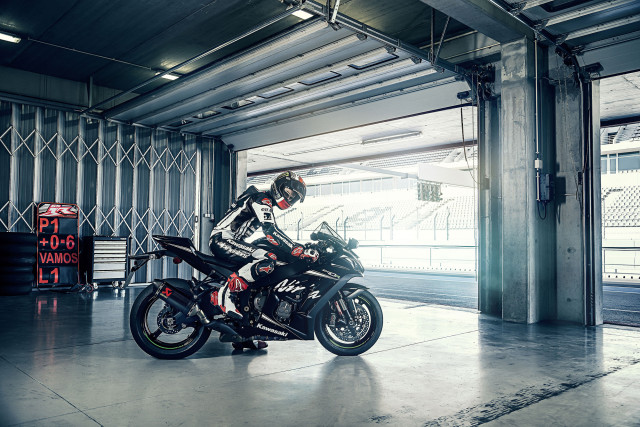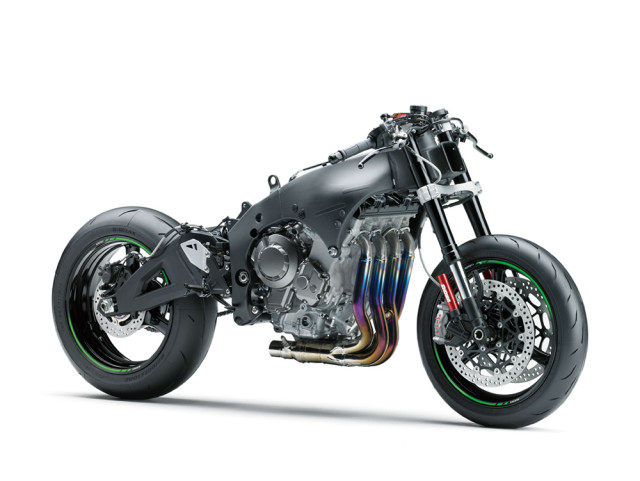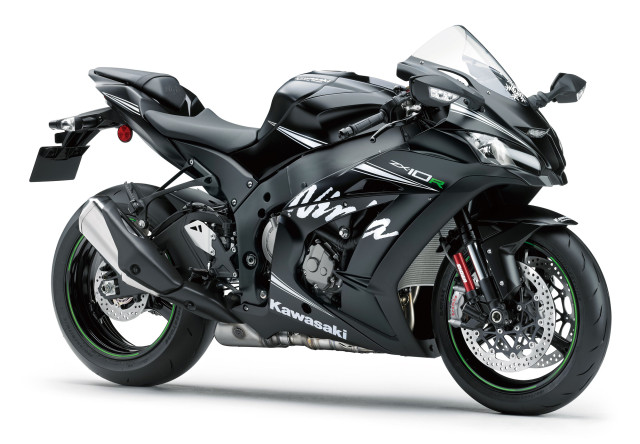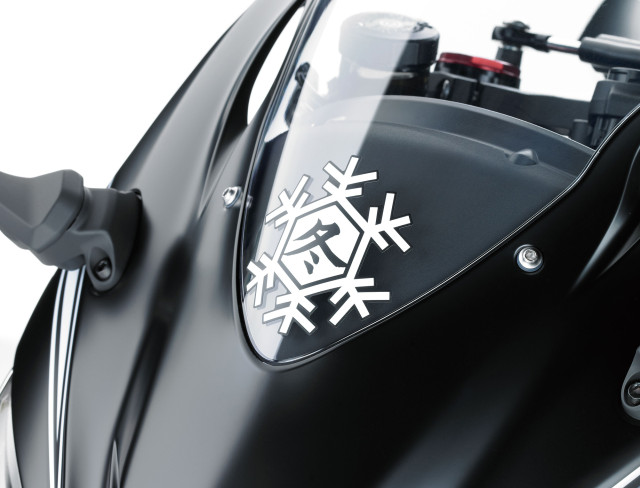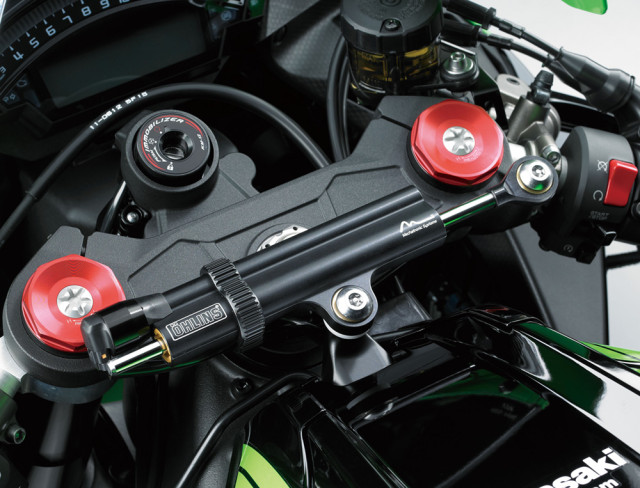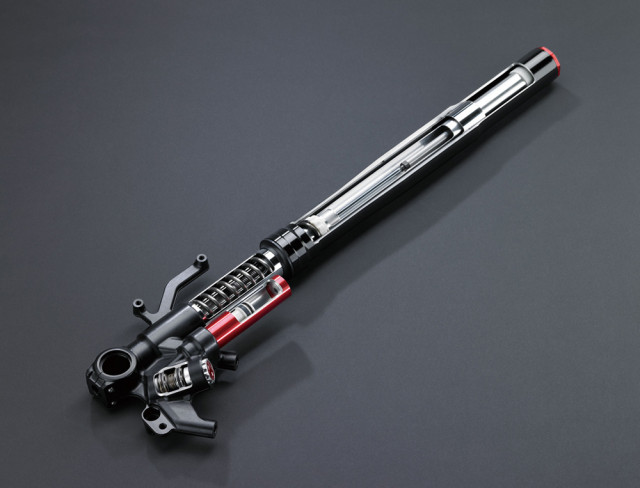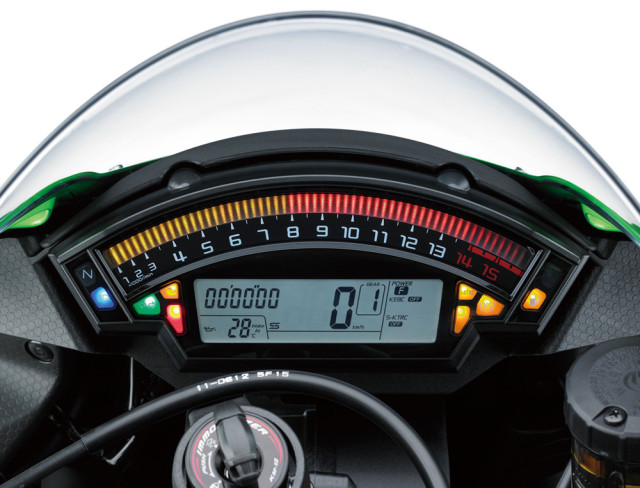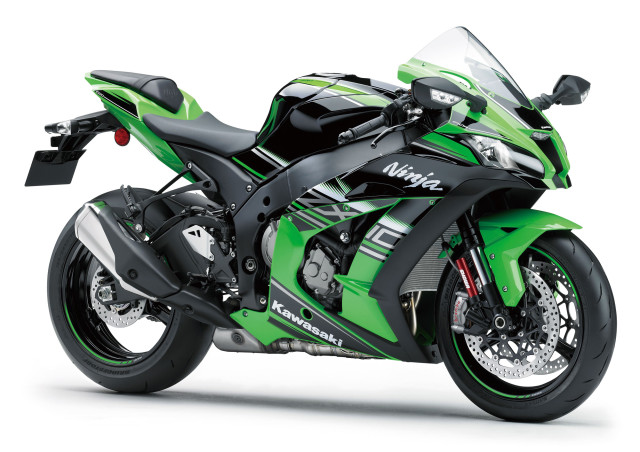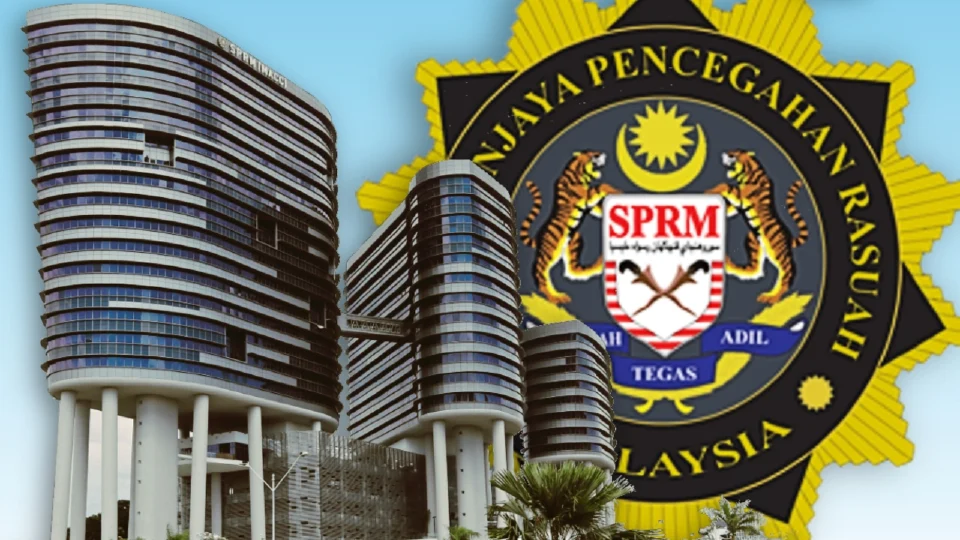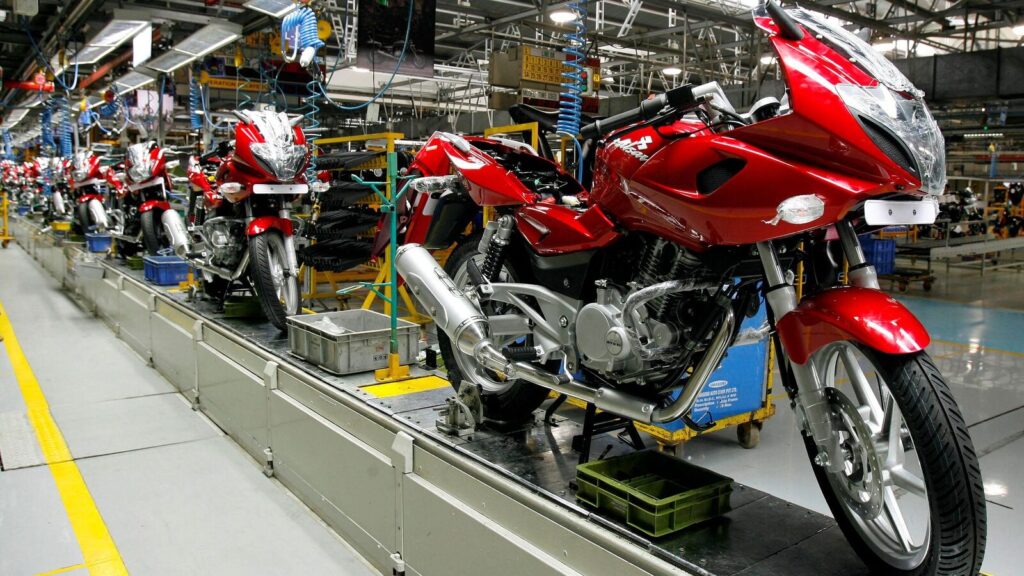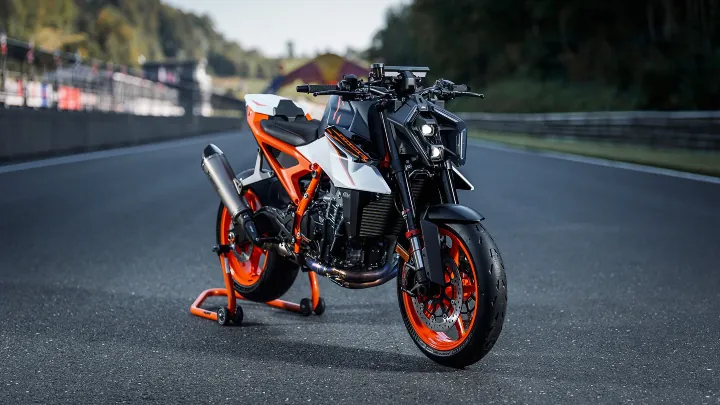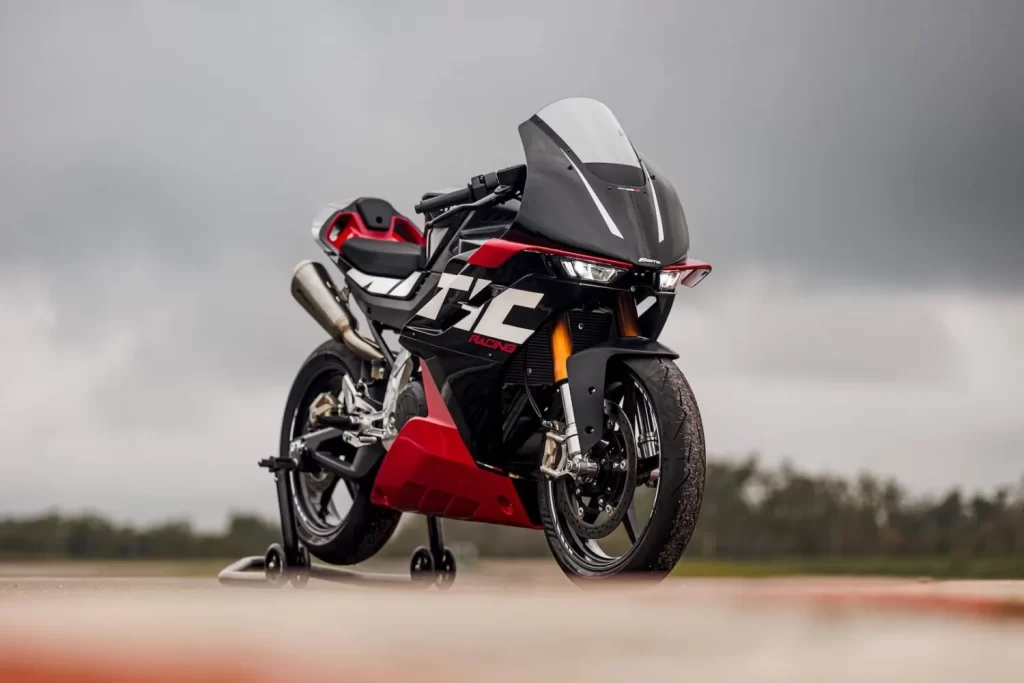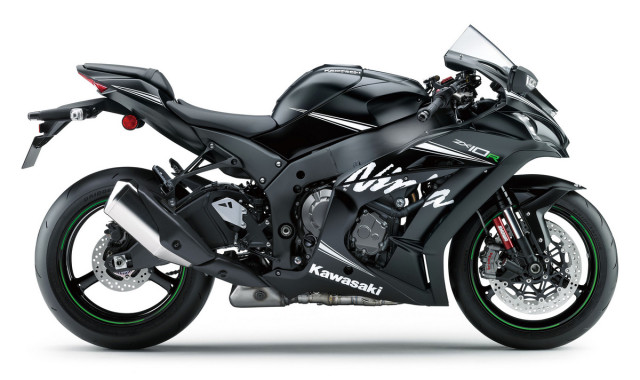
Do not feel perturbed by the identical looks of the new Kawasaki ZX-10R ABS to its predecessor. Under those familiar fairings lies a brand new machine that Kawasaki has left barely nothing untouched. Changes to the engine, chassis, suspension, fairings, electronics, brakes, and exhaust were all done based on feedback from Sykes and Rea, the very two riders who are most familiar with the Ninja ZX-10R ABS.
Kawasaki’s development team has redesigned or replaced almost all parts of the 998 cc four cylinder in-line engine first introduced in 2011. New pistons, camshafts, cylinder head and primary gear, lighter crankshaft, redesigned porting with electronic throttle valves, 25% bigger airbox and thicker engine sidewalls are among the major changes involved. Innovative and practical engineering placed the brand new cassette-type transmission relatively high in the engine so that its removal could be done without having to drain the oil.
The cylinder head and crankshaft are all new and 20% lighter. This reduces engine inertia and allows the engine to spin up or slow down faster, which obviously improves acceleration and deceleration and also has the added benefit of helping the bike change directions more quickly as crankshaft inertia can blunt directional change quickness.
The crankshaft also gets a new, lighter balancer, and the connecting rods have a new coating which reduces friction at high rpm. The new cylinder head’s intake and exhaust ports are now straighter and wider, allowing the flow of more air/fuel mixture into the combustion chamber. Both the intake and exhaust ports are now polished, which helps improve flow, and the valves are now titanium for weight reduction.
The result is an output of 210 hp (154.4 kW) at 13,000 rpm (with the RAM Air effect) and a peak torque of 113.5 Nm (83.7 lb-ft) at 11,500 rpm. Some may say that the maximum output is more or less the same as that of the previous model, but the new engine now peaks at higher rpm with stronger mid-range torque, whilst complying to the tighter Euro 4 emissions requirements.
Three adjustable ignition mapping are available – Full, Middle and Low. The Low setting restrict power output to 60 percent, and the Middle map interestingly would maintain the same percentage of power as long as throttle opening is up to 50% improvement. Flick the throttle beyond the halfway mark, and Full power would be at hand.
All this power would be fully useable to the rider, with the help of an impressive multitude of electronics. At the heart of the package is a brand new Bosch Inertia Measurement Unit (IMU) that measures six degrees of freedom variables. Five of the IMU axises are measured by an array of sensors, with the sixth calculated by the system’s proprietary software. The IMU then uses all these information to fine-tune the rider-adjustable control systems which are the traction control (KTRC), the launch control (KLCM) and engine braking (KEBC).
The Kawasaki Ninja ZX-10R now employs the intelligent braking system (KIBS) that links the ABS control unit with the engine’s electronic control. The system monitors the front and rear wheel speed, front brake caliper hydraulic pressure, throttle position, engine speed, clutch actuation and gear position to determine the ideal brake hydraulic pressure. This is the first time such an integrated braking system has been installed to a production motorcycle.
Another system designed to assist riding is the innovative Cornering Management function. The technology helps riders to stay on their intended line through the corner by automatically co-ordinating the traction control and the braking system. The KIBS (Kawasaki Intelligent anti-lock Brake System) and Cornering Management comes standard on the new Ninja ZX-10R.
The frame geometry has been revised by seating the rider closer to the steering head and elongating the swingarm. The front is now loaded with more weight and facilitates better corner entry stability, and further assisted by the reduced inertia from the lighter rotating parts of the engine.
The Kawasaki Ninja ZX-10R 2016 model employs Showa’s latest suspension kit that debuts on this bike. It feature a new design that promises to eliminate pressure balance fluctuations by using the Balance Free Fork (BFF) and Rear Cushion (BFRC) which have been developed in WSBK throughout 2014.
The centrepiece of the Ninja ZX-10R’s instrument panel is the high visible LED-backlit bargraph tachometer – a mass-production first when introduced on the 2011 model. The tachometer also functions as a shift indicator: the LEDs will flash when the set rpm is reached. Riders can set the shift indicator rpm according to preference. The digital display updated to include the new Kawasaki Launch Control Mode (KLCM), Kawasaki Engine Brake Control (KEBC) and Kawasaki Quick Shifter (KQS) functions, as well as an indicator for the IMU. Additional functions on the multi-function meter include: gear position indicator, odometer, dual trip meters, average fuel consumption, instant fuel consumption, Power Mode (3 modes), S-KTRC (5 modes + OFF), low fuel indicator, Economical Riding Indicator, and a host of indicator lamps. The numerous modes and functions are controlled using a multi-function button located at the left handle.
Last but not least, a larger top fairing was requested by the WSB team to help improve high-speed stability and aerodynamic flow. Increased wind protection is claimed to help racers change position more easily under braking turns because the air is less turbulent. The windscreen is now fully supported by the fairing and vibrate less at high speed. Intakes at the side of the windscreen reduce negative air pressure in the cockpit to stabilise airflow and reduce helmet buffeting. A new front mudguard gets a stepped design helping to direct air to the radiator to increase cooling.
The Kawasaki Ninja ZX-10R is available in Green, Grey and Black.
2016 Kawasaki Ninja ZX-10R price in Malaysia is estimated at RM99,000.00 (basic excl. 6% GST)
ENGINE
Type: Liquid-cooled, 4-stroke In-Line Four
Displacement: 998 cm3
Bore and Stroke: 76.0 x 55.0 mm
Compression ratio: 13.0:1
Valve system: DOHC, 16 valves
Fuel system: Fuel injection: ø47 mm x 4 with dual injection
Ignition: Digital
Starting: Electric
Lubrication: Forced lubrication, wet sump with oil cooler
DRIVETRAIN
Transmission: 6-speed, return
Final drive: Chain
Primary reduction ratio: 1.681 (79/47)
Gear ratios:
1st : 2.600 (39/15)
2nd : 2.214 (31/14)
3rd : 1.944 (35/18)
4th : 1.722 (31/18)
5th : 1.550 (31/20)
6th : 1.391 (32/23)
Final reduction ratio: 2.294 (39/17)
Clutch: Wet multi-disc, manual
FRAME
Type: Twin spar, cast aluminium
Wheel travel: front 120 mm
rear 114 mm
Tyre: front 120/70ZR17M/C (58W)
rear 190/55ZR17M/C (75W)
Caster (rake): 25.0°
Trail: 107mm
Steering angle degrees: 27° left/ 27° right
PERFORMANCE
Maximum power : 147.1kW {200 PS} / 13,000 min-1 (MYS)
Maximum power with Ram Air: 154.4kW {210 PS} / 13,000 min-1 (MYS)
Maximum torque : 113.5 N.m {11.6 kgf.m} / 11,500 min-1 (MYS)
BRAKES
Front: Type: Dual semi-floating ø330 mm Brembo discs
Caliper: Dual radial-mount, Brembo M50 monobloc, opposed 4-piston
Rear: Type: Single ø220 mm disc
Caliper: Single-bore pin-slide, aluminium piston
DIMENSIONS
Overall length: 2,090 mm
Overall width: 740 mm
Overall height: 1,145 mm
Wheelbase: 1,440 mm
Ground clearance: 145 mm
Seat height: 835 mm
Curb mass: 206 kg
Fuel capacity: 17 litres



